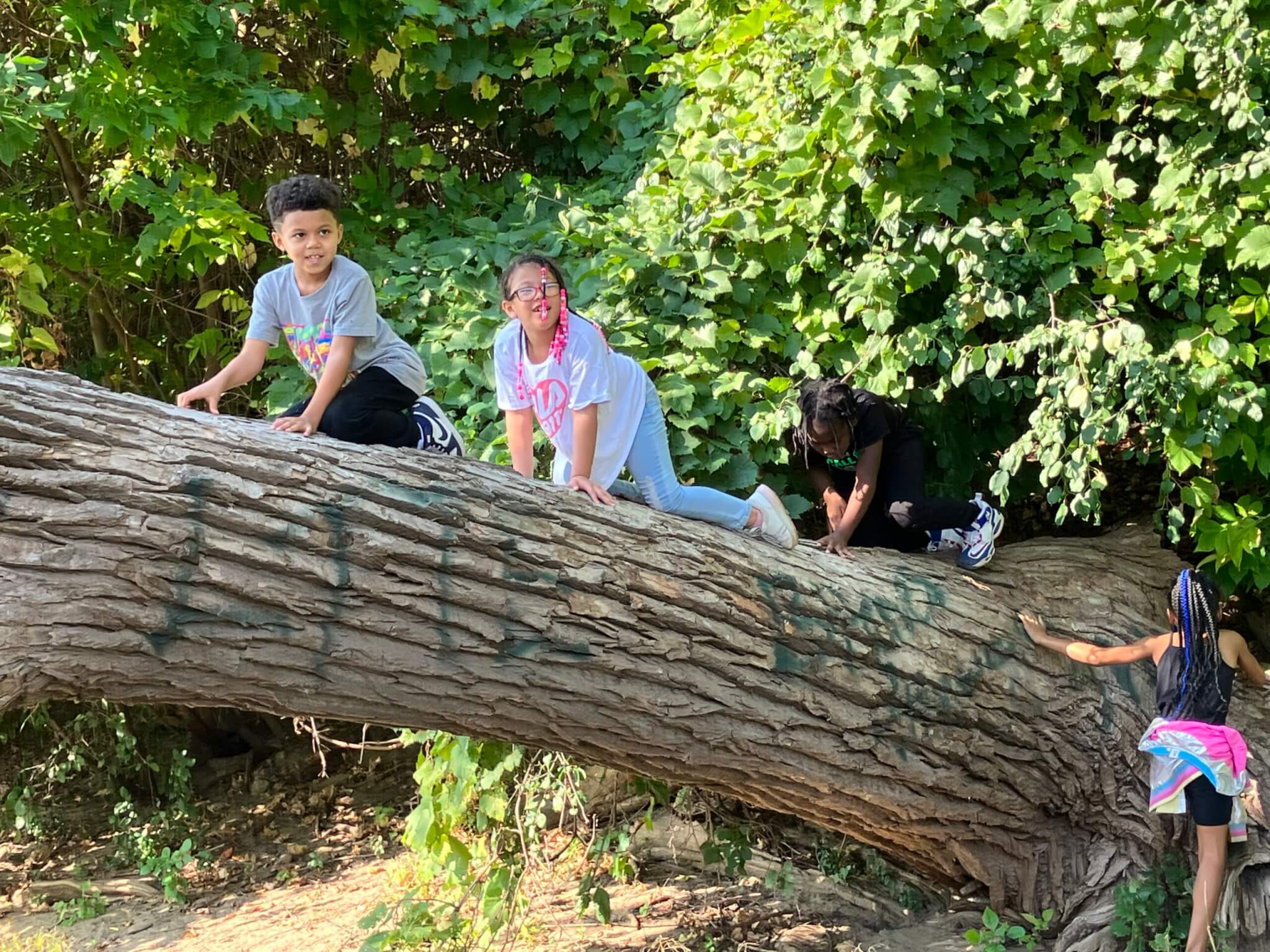People for Parks Fund projects are teaching students new ways to connect in the natural world .
As an outdoor educator at the Kroening Nature Center at North Mississippi Regional Park, Jeanette Lutter-Gardella believes something powerful happens when kids get a chance to leave the classroom and visit a neighboring park. “Once you get them outside, you can see the difference in what children are like, how they behave, and what they’re able to articulate,” she says. “I spent a long time in formal education in schools, and I’ve always seen that something really special happens when students get time in the outdoors.”
A growing body of research [source 1, 2] backs her up, with findings that show getting school-age students into the natural world can have a host of beneficial effects, from reducing anger, aggression, and obesity, to increasing attention, the quality of peer-to-peer relationships, and even test scores. In fact, a study from the American Institutes for Research found that attending school outdoors boosted student science scores by nearly 26 percent.
With positive side effects like that, it’s no surprise that parents are strongly in favor of classroom and out-of-school partnerships that give kids better access to the outdoors. A recent study from the National Recreation and Park Association found that 73 percent of parents say it’s extremely important or very important for local schools and park and recreation agencies to build partnerships that promote equitable access to open space. The study found the strongest support from adults who identify as Black or African American (69 percent), Millennials (70 percent), and Hispanic (72 percent).
Promoting healthy connections between schools and the parks has also been a theme of the People for Parks Fund, a new Minneapolis Parks Foundation microgrant fund that supports community-driven ideas for getting more of us into the great outdoors. “We prioritize equity so that there’s access and enjoyment of the parks to all communities. That includes introducing the youth to the outdoors whether it’s learning a leisure activity or through an educational program,” says Marsha Yang, a member of the Advisory Committee that selects People for Parks grantees through a selective process every spring. “Not only does it increase a healthy lifestyle, but the youth gain more confidence in connection with nature when they are provided with opportunities to do so. Another approach that the committee has been intentional about is ensuring we provide funds to different neighborhoods of Minneapolis to raise awareness of all the amazing things that our community is spearheading.”
Here’s a look at just a few projects your support for the Minneapolis Parks Foundation is helping to make possible this year for young learners:
Active Chefs at Sumner Field: While the Heritage Park Neighborhood of Minneapolis has been designated a “food desert” by the USDA, the students in Urban Strategies’ Active Chefs program are working hard to change that. For nearly a decade, their Green Garden Bakery has been turning community garden-grown veggies into tasty desserts through an innovative social enterprise program that puts proceeds back into the community.
This summer, a People for Parks Fund grant helped the Active Chefs expand their growing range, with a pop-up program for K-7th graders at Sumner Field’s community garden. “It’s a program that incorporates experiential learning with wellness, teaching them how to take what they’ve grown in the garden and turn it into healthy energy for your body,” says Elana Dahlberg, operations manager at Urban Strategies. Kids are encouraged to come up with their own recipes, and even competed in a Top Chef-style salsa-making contest.
“They learn that you can make great things out of your garden with just a cutting board and bowl,” Dahlberg says, before adding that it’s just the start of the benefits that come from cultivating and caring for a community garden. “Nurturing something, and having it grow and prosper brings a lot of hope, and having that happen in parks and community spaces is great to see.”
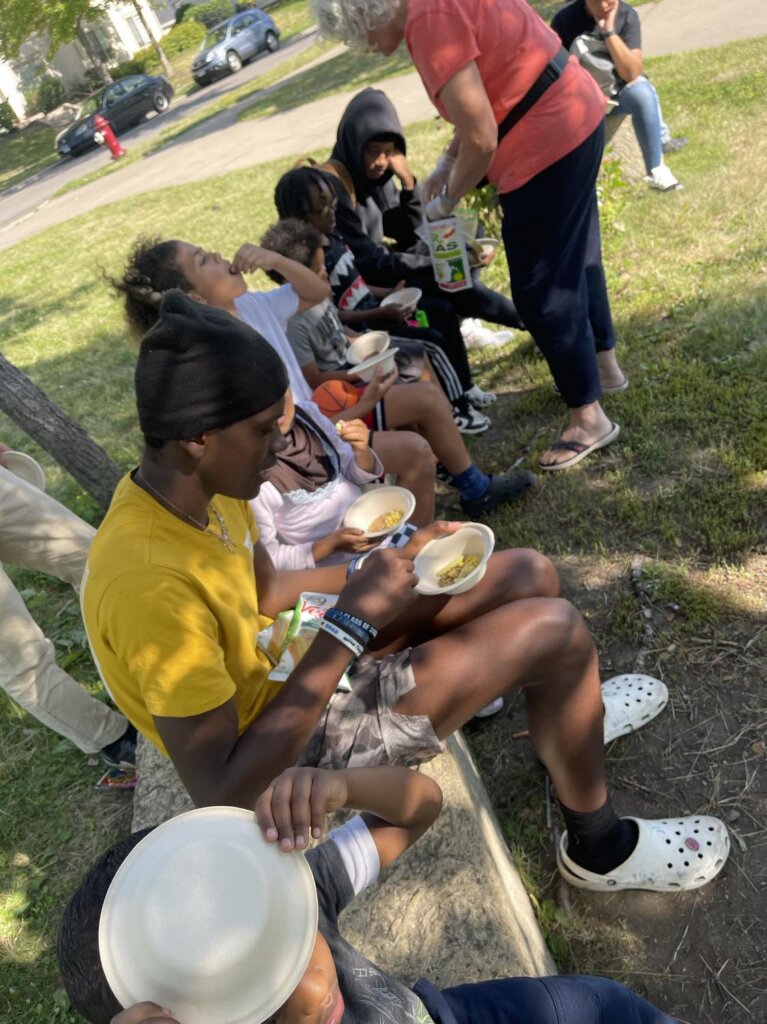

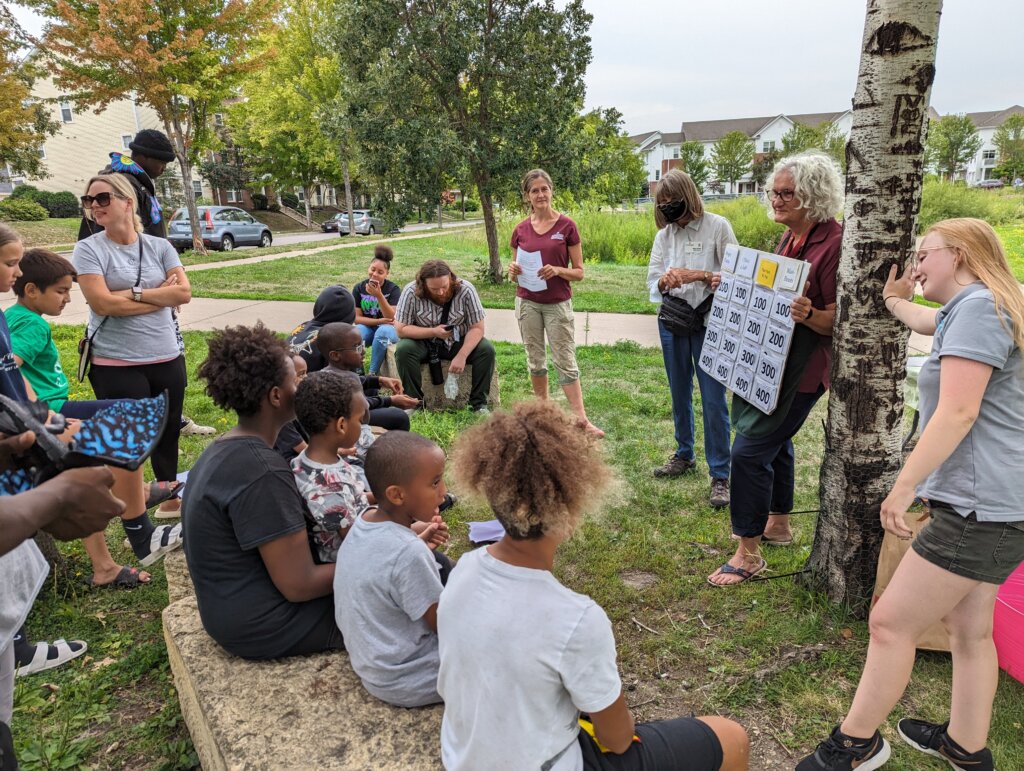

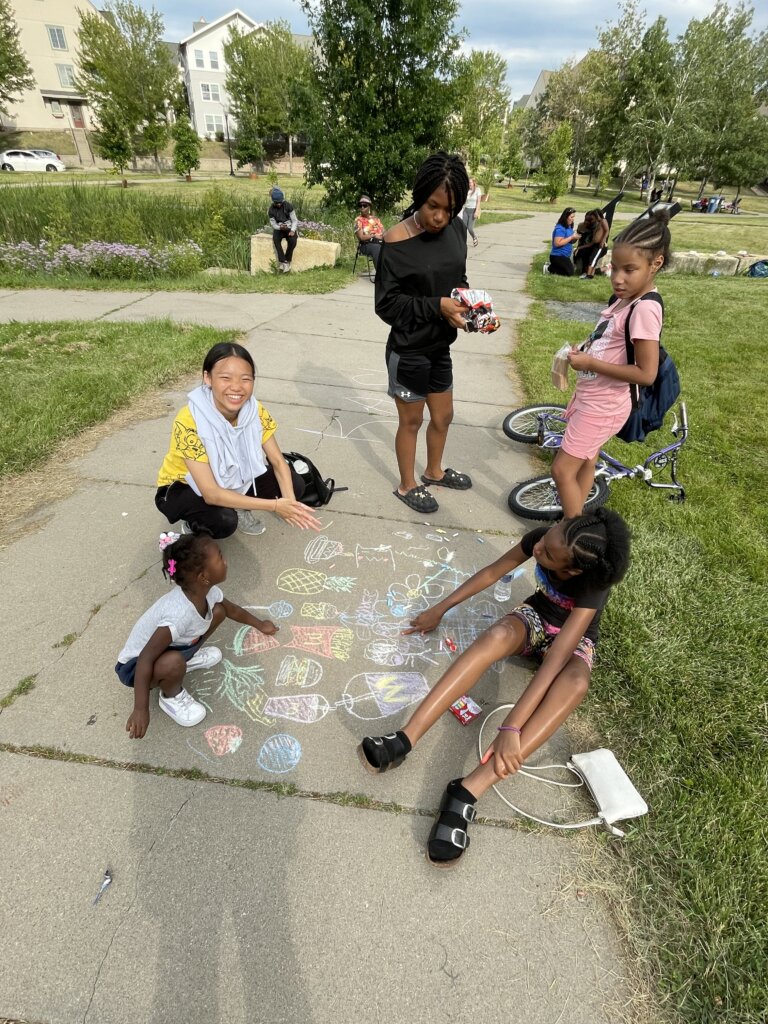
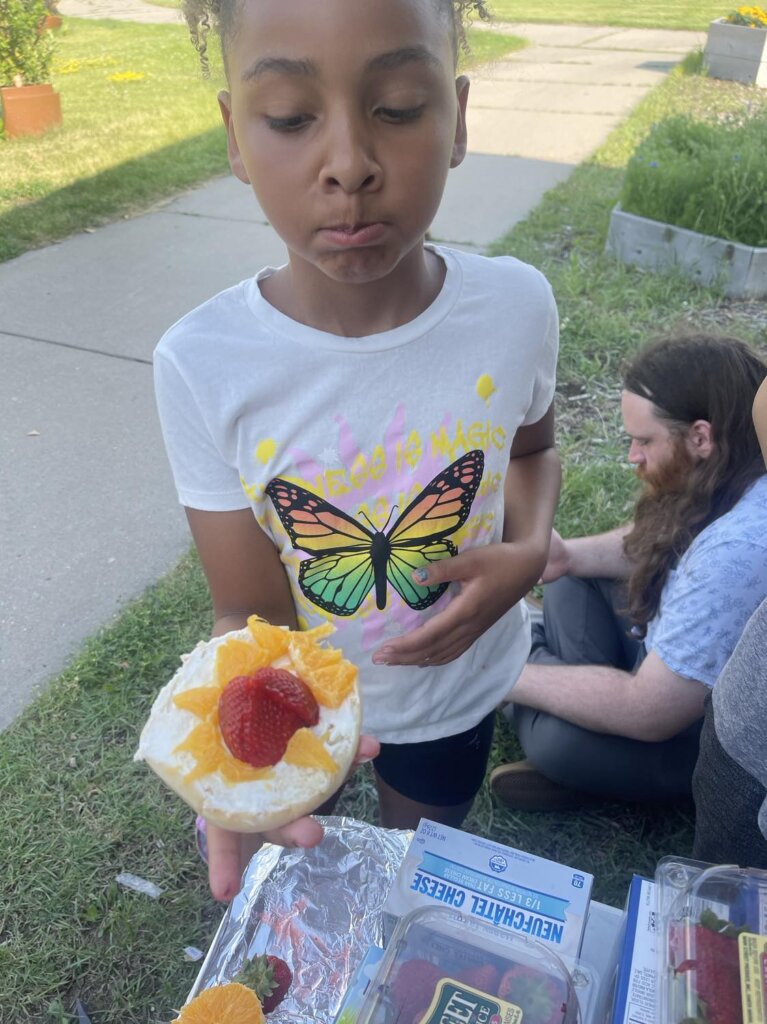
Photos Courtesy of Urban Strategies’ Active Chefs program.
Nature from the Inside Out at North Mississippi Regional Park: Making time to explore nature is never easy during the school year, especially in schools that are struggling to meet student needs. But by connecting Minneapolis teachers to naturalists at the Kroening Nature Center, the Nature from the Inside Out program is hoping to support the school communities at Cityview and Jenny Lind elementary schools by bringing students to the park for a series of environmental experiences. “Developing a relationship and an appreciation for the natural world isn’t a one-time experience—it has to happen over time,” says Lutter-Gardella.
This school year, People for Parks funding will help provide field trip transportation and environmental learning materials for students at the two elementary schools, where 9 in 10 students are from communities of color, and more than 7 in 10 are financially disadvantaged. By working directly with teachers, naturalists will help to incorporate these field trips into the school calendar, while helping map environmental education experiences to the Minnesota state standards. “Teachers are over-burdened. They want to create these experiences for their kids, but they can’t carry it all–we need partnerships to make it possible,” says Lutter-Gardella. “To be a good steward of the environment, you have to fall in love with nature first, so it’s about spending real time, watching the change of seasons, to help that happen.”

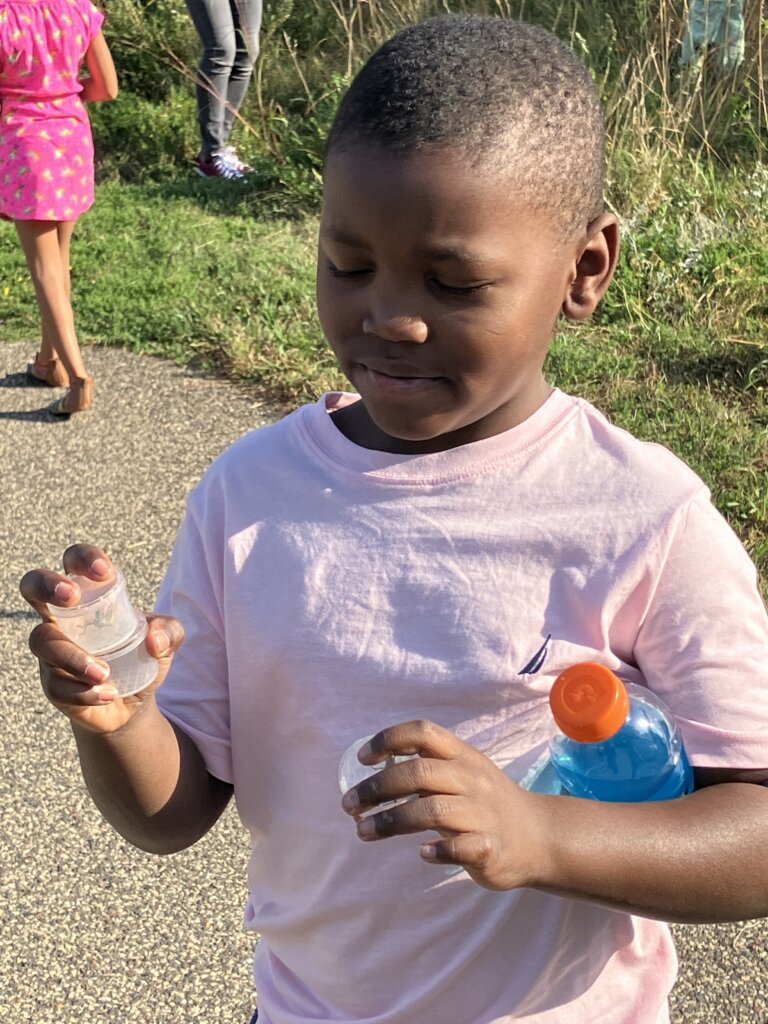
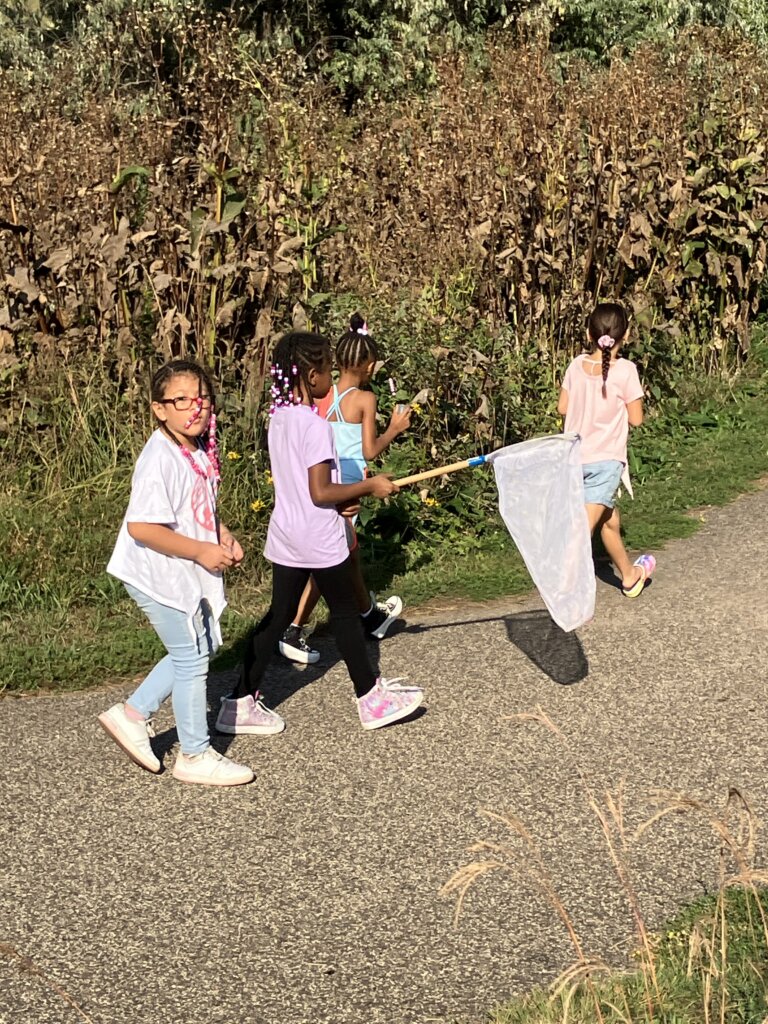
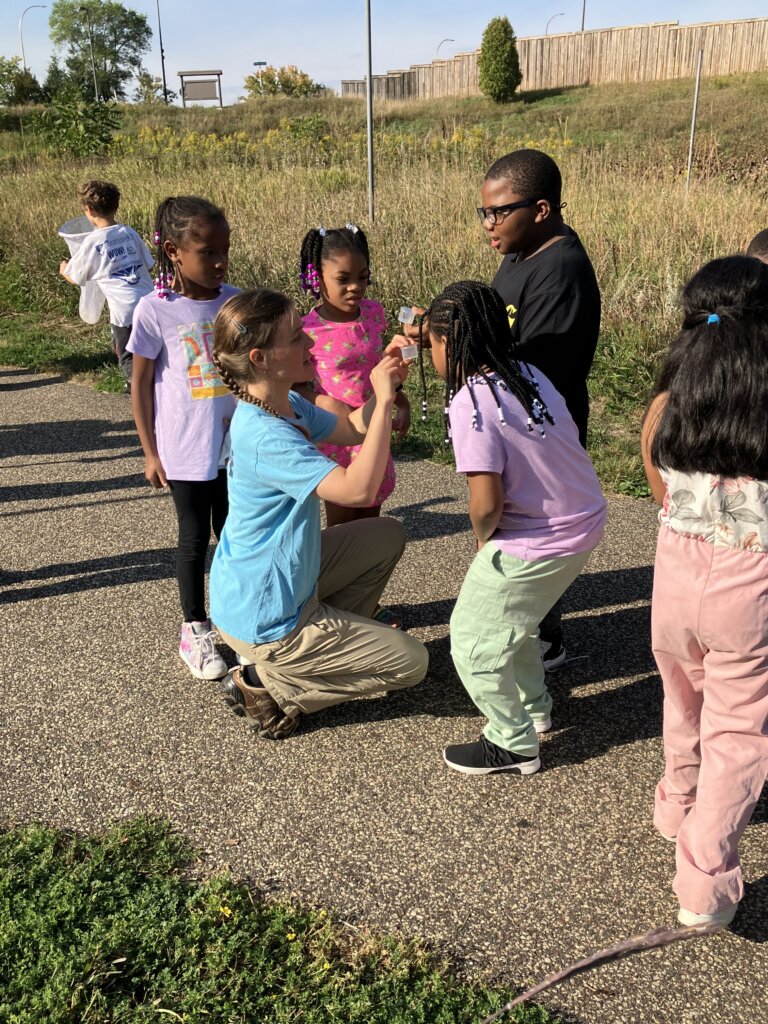
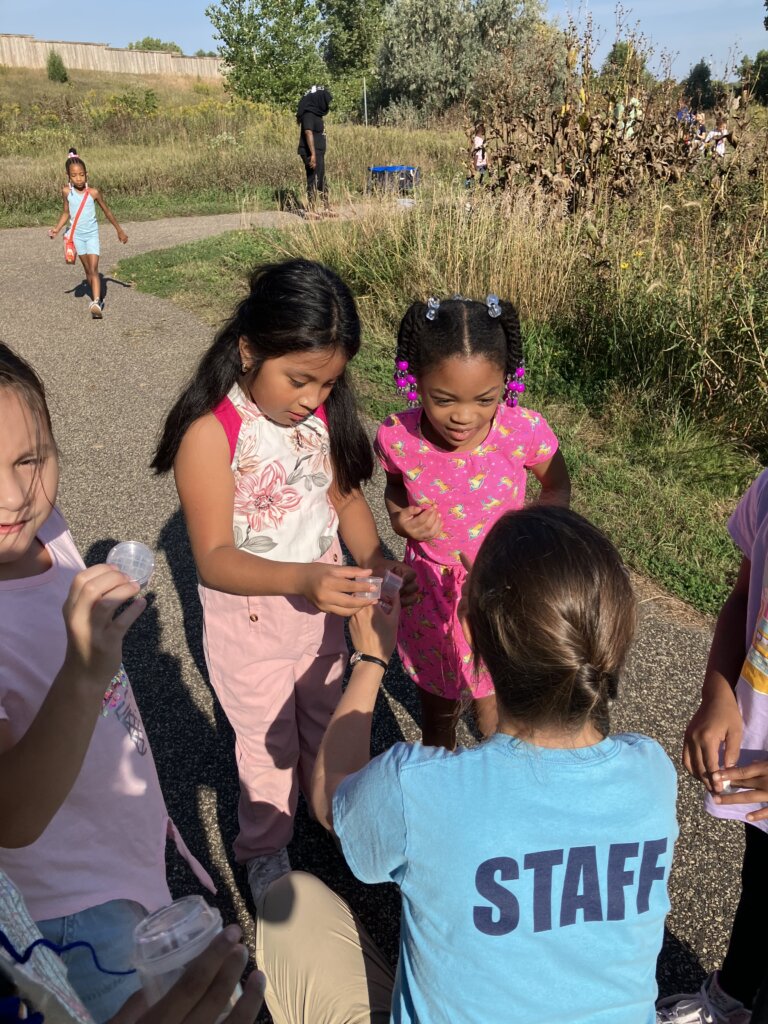
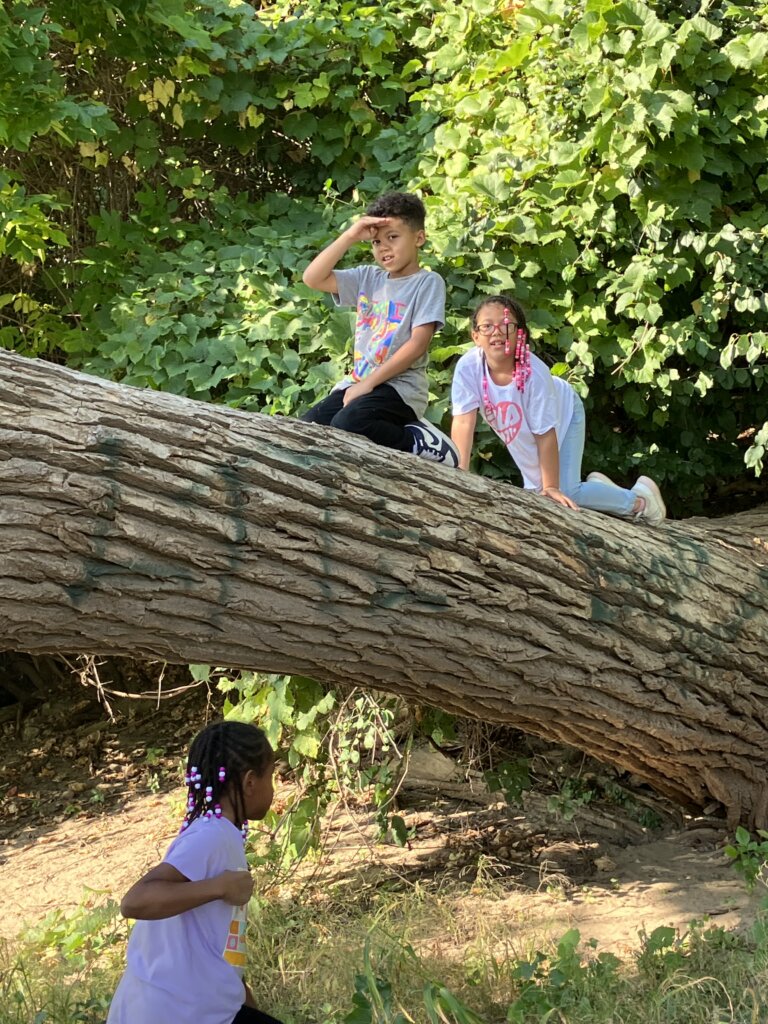
Images Courtesy of Nature Inside Out.
Making Music at the Lake Harriet Bandshell: The Lake Harriet Bandshell is one of the Twin Cities’ most iconic music destinations, hosting everything from headline bands like the Jayhawks to community ensembles like the Southwest High School Band. “Playing the Pops Concert at Lake Harriet is an important tradition for our school community,” says Reid Wixson, Southwest’s director of instrumental music. “More and more, we’re having our own students arrange and conduct the music at our concerts, and playing at the Bandshell for the wider community is something we really look forward to.”
Highlighting the work of diverse composers is also a goal of the Southwest High School music program, which will use a People for Parks Fund grant to purchase new sheet music to showcase more BIPOC composers. “If it weren’t for the Parks Foundation, we wouldn’t be able to afford to buy and perform new music, which is a really important piece of our curriculum,” says Wixson. Parks users and music lovers will get the chance to hear how this grant pays off at a free public concert at the Lake Harriet Bandshell in spring 2024.
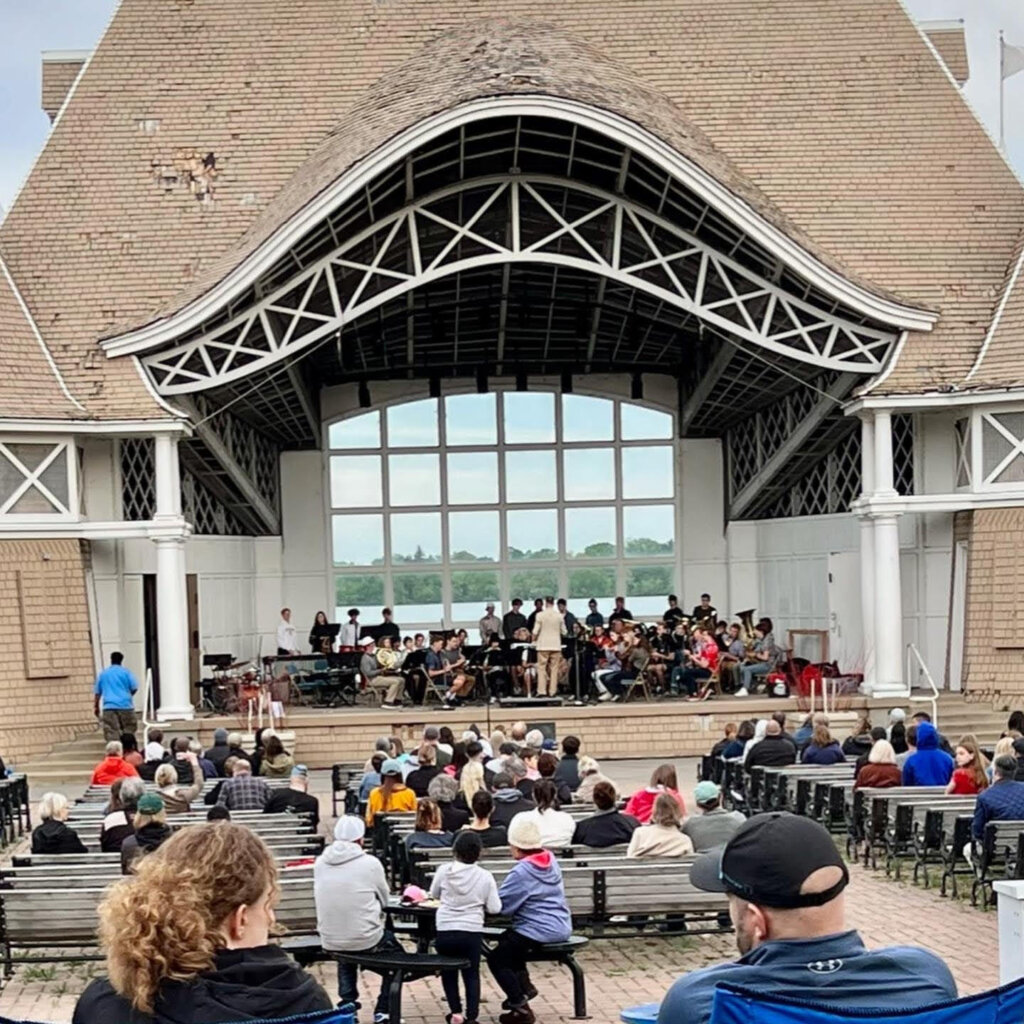


Images Courtesy of Southwest High School.
Sources:
- https://www.google.com/url?q=https://www.nrpa.org/publications-research/park-pulse/partnering-with-schools-for-greater-access/&sa=D&source=docs&ust=1695232283244353&usg=AOvVaw1Gi1h3B9I2LrYgZJtopZKV
- https://www.google.com/url?q=https://www.gse.harvard.edu/ideas/usable-knowledge/21/08/make-outdoor-learning-your-plan&sa=D&source=docs&ust=1695232283244472&usg=AOvVaw3cAl2sRMggbfEQ9FnsUdjJ

